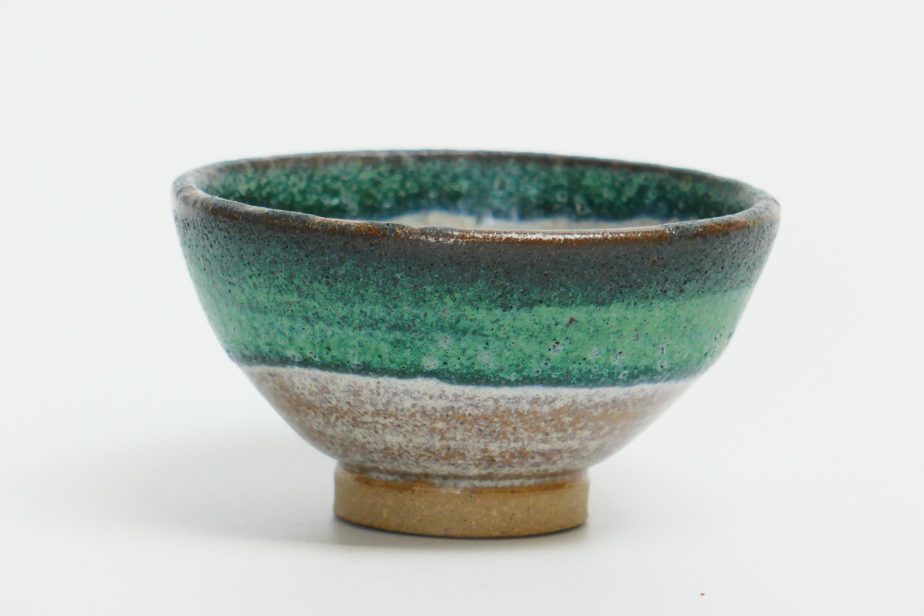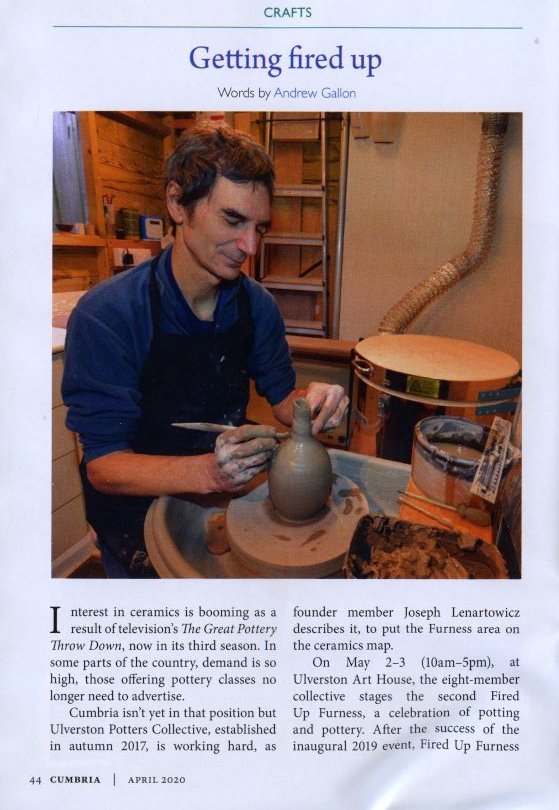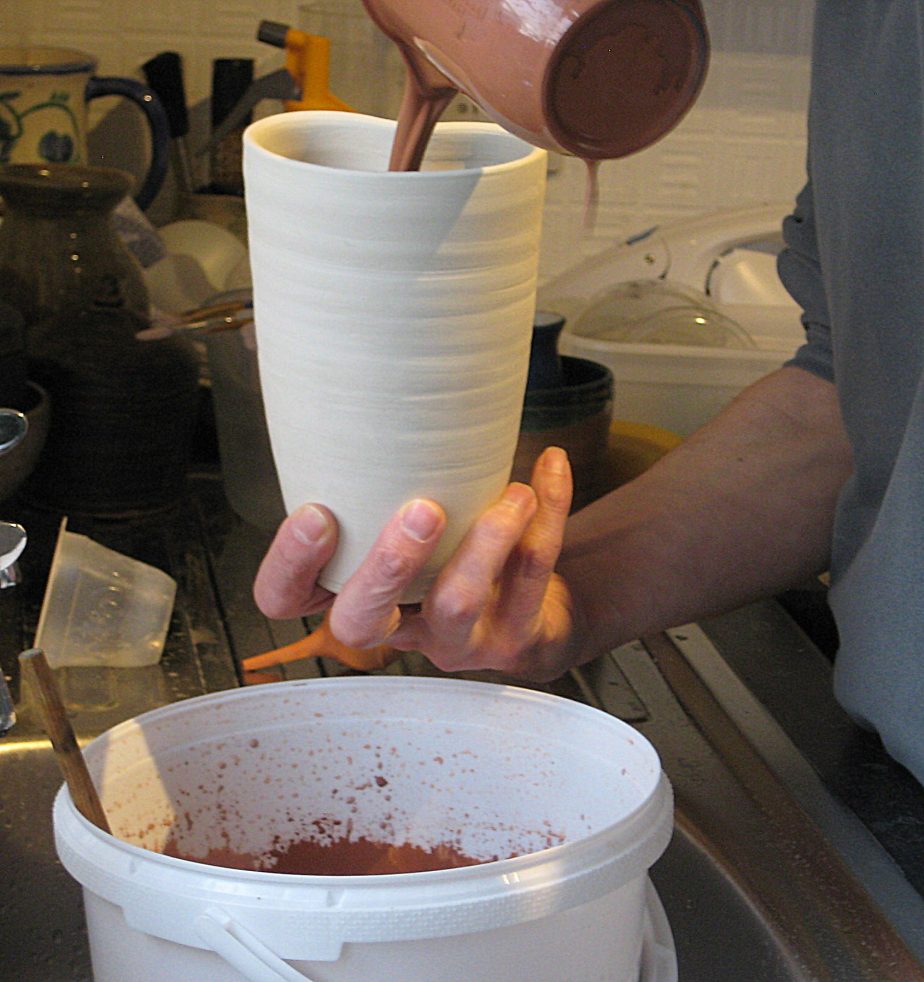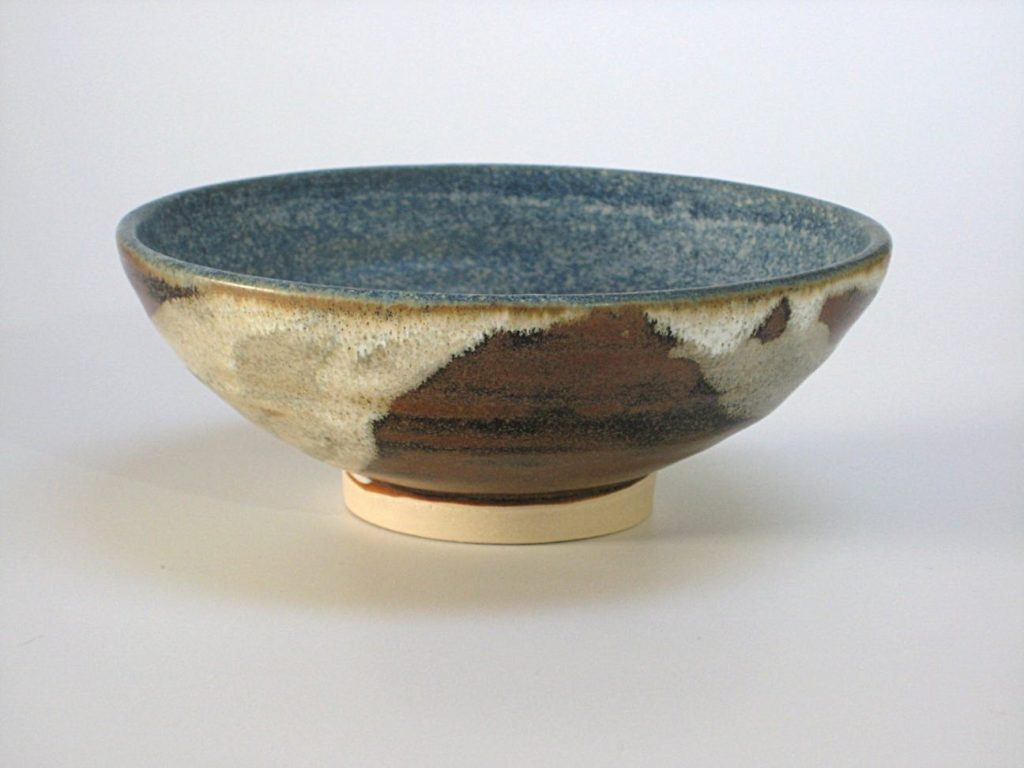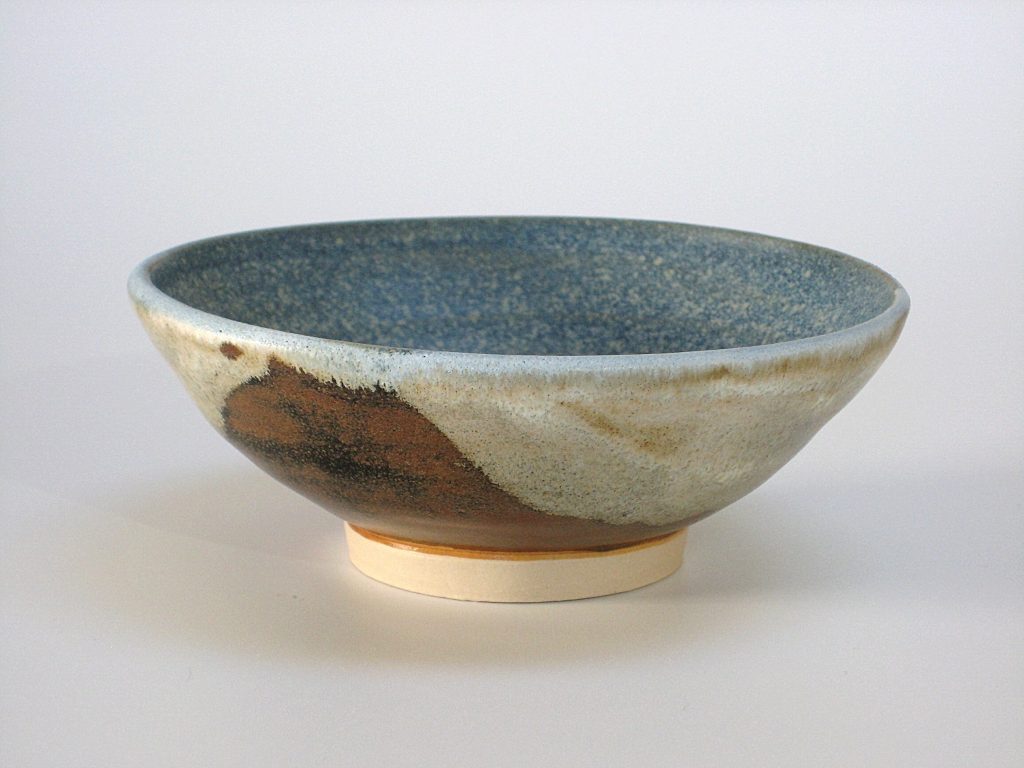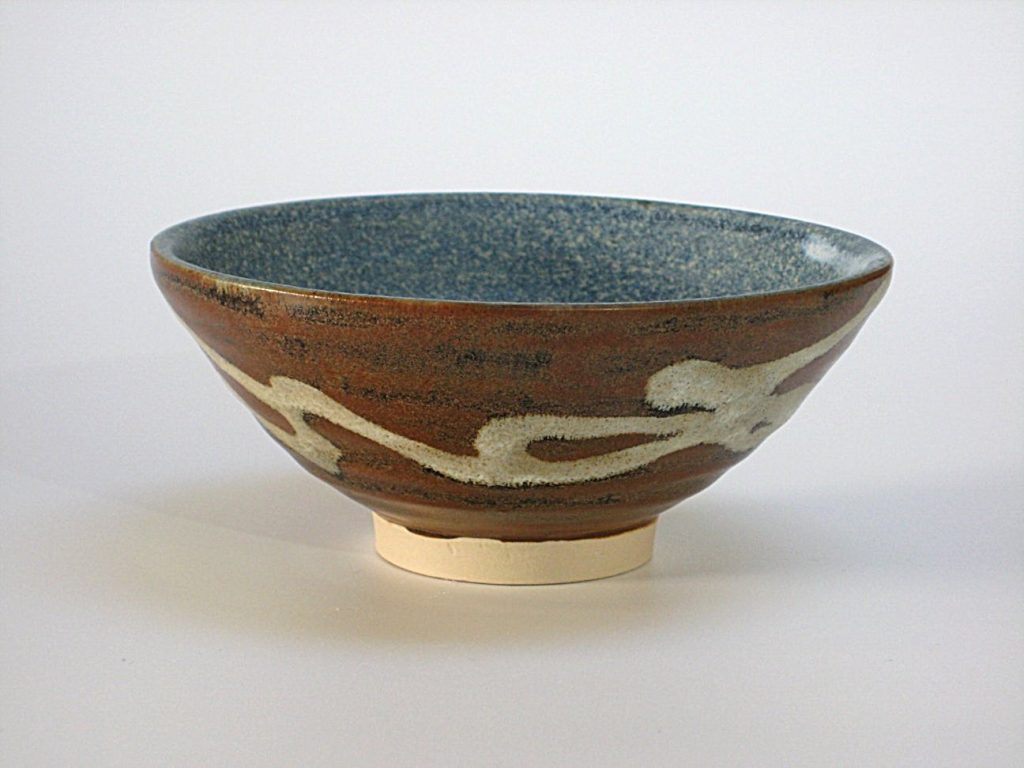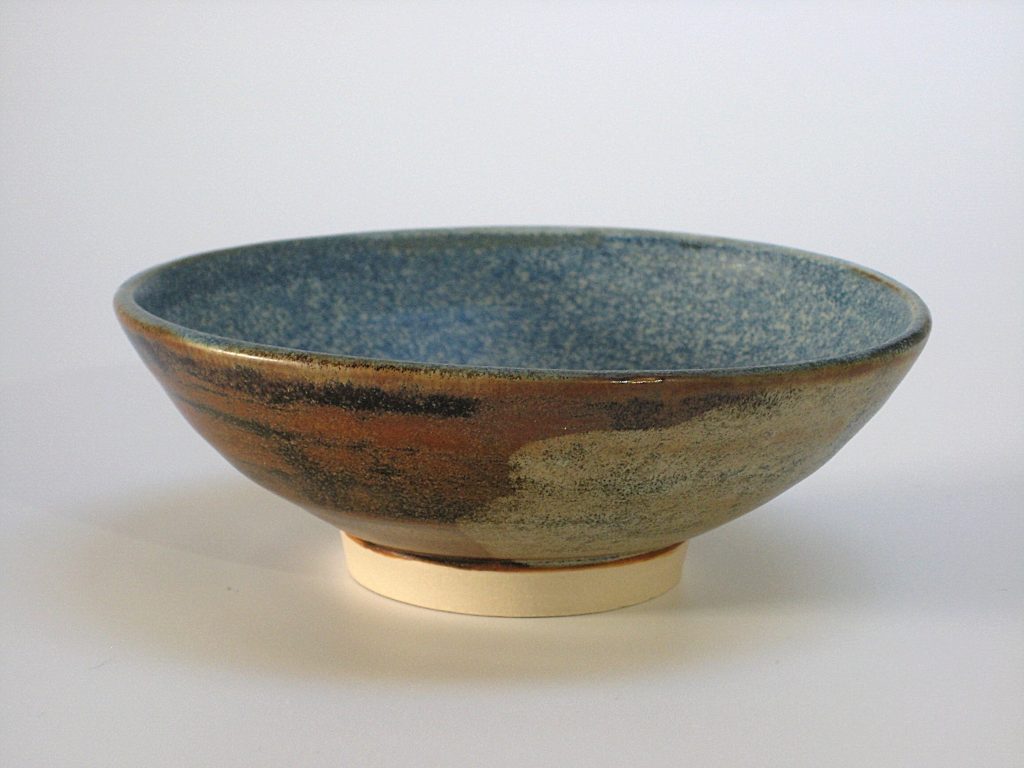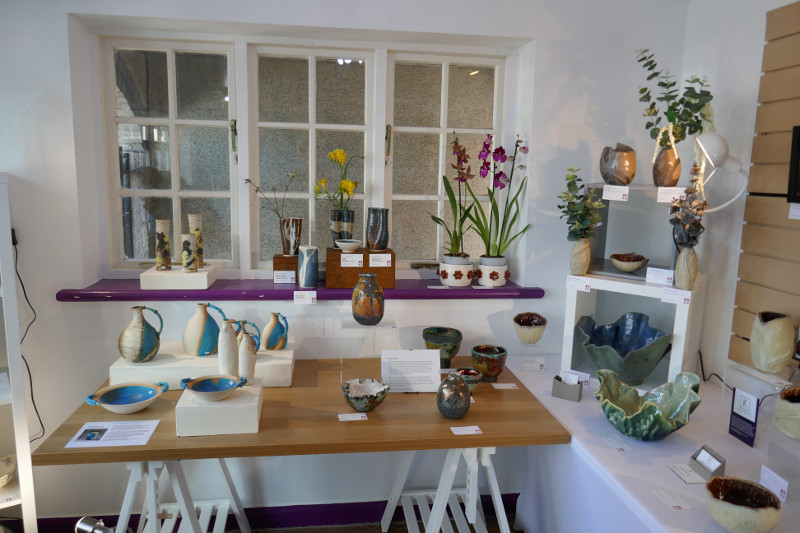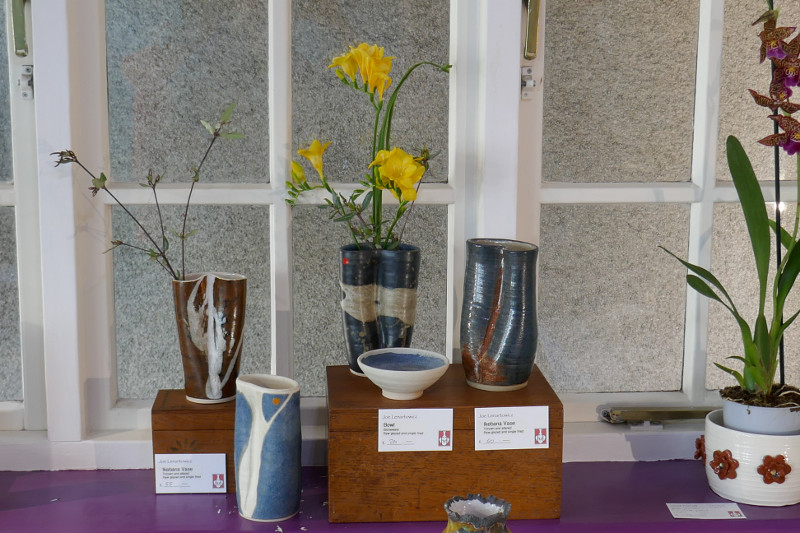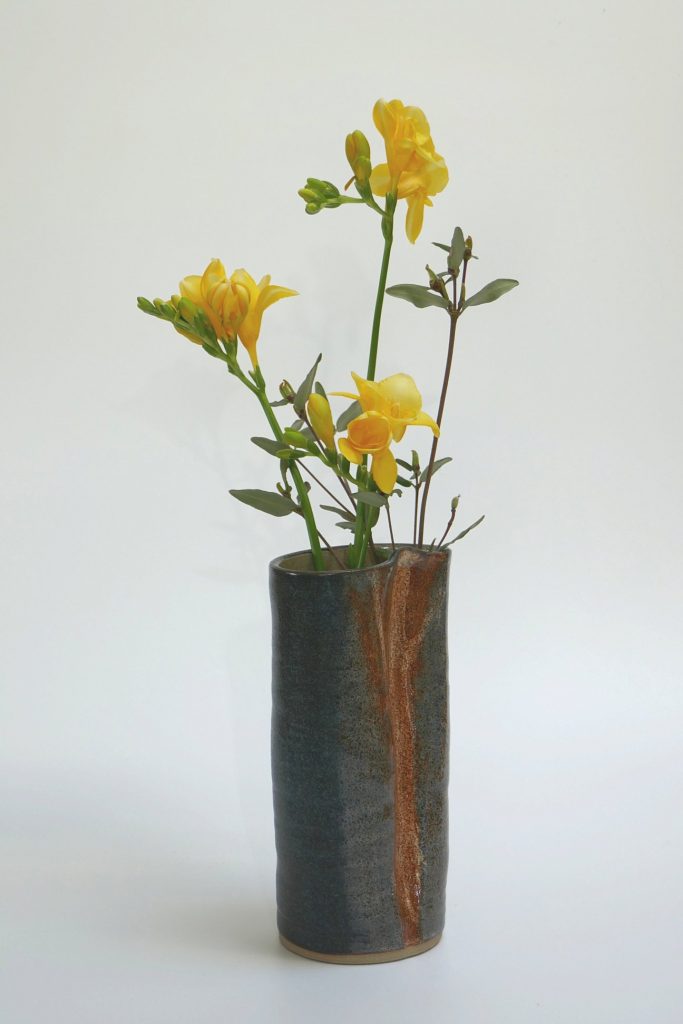Because of Covid I’m missing annual pilgrimage to Somerset to do some wood firing. Normally my pots are fired in an electric kiln, but wood firing is something special – not to be confused with low temperature “smoke firing” which produces black smokey patterns but is not at all food safe, high temperature wood firing goes to stoneware temperatures typically around 1280-1300°C.
Wood fired glazes can produce superb depth and complexity especially when the kiln is deliberately starved of oxygen at high temperature to create chemical “reduction”. Pots often show mottling where ash from the firing lands on them as it passes through the kiln and this can be tremendously variable depending on where the pots are staked in relation to the how the hot gasses from the firing flow past. This variability and unpredictability helps create the uniqueness of every pot.
Naked unglazed clay turns a wonderful toasty colour and ash landing on it melts forming a “natural” glaze in-situ as can be seen on the bare outer surface of this bowl.

